end Threaten 1046 Cairo domination of years as capital, earlier this month the Egyptian government has announced plans to create a new, yet- to-be-named capital in eastern new Cairo. The promise of over 270 square mile "new New Cairo" drew headlines worldwide with its prevalence; a $ 45 billion development of housing, shops and sites designed to attract tourists for a day, including a theme park larger than Disneyland. And of course, the plans include the promise of houses - for at least 5 million people, in fact, with the large number of schools, hospitals and religious and community buildings a modern city requires - make the new capital of Egypt, the largest planned city in history
the idea of building a new capital appealed to governments throughout history . a way to wipe the slate clean, to stimulate the economy and lay your worldview in stone, concrete and park. Even Old Cairo was founded as the capital built for this purpose, although urban planning certainly has changed a bit since. It continues to change today; see the complete list of ways to build a whole new city after the break.

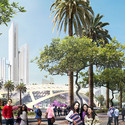

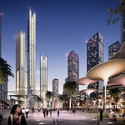 44
44
Canberra
Famously a solution to the rivalry between Sydney and Melbourne, modest Canberra was founded in 1913 as the capital for the new federated Commonwealth of Australia. Unlike the frenzied building of the newest planned city, Canberra construction was moving at a slower pace befitting the quiet, leafy town that was envisaged. Designed by the husband and wife team of Walter Burley and Marion Mahony Griffin, the capital is made of geometric shapes arranged around the topography of the city, so the city is shaped by natural landmarks, with large tracts park and vegetation. Unfortunately, a plan to cover each of the three main hills with flowers in a primary color (using the term "garden city" very literally) never materialized.
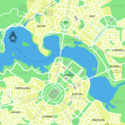

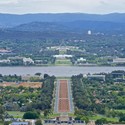
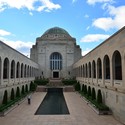 44
44
Brasilia
modernist utopia of Brazil is perhaps the most famous planned city in the world. With a population of nearly 2.5 million arriving in the 55 years since its establishment in 1960, it is certainly one of the most successful in the simple terms of demographic statistics. The plan to move the capital from Rio de Janeiro date back to the Empire of Brazil in 1827, and the city center of the country has become a way of proclaiming the modernity of Brazil, while integrating the region in a way that the coastal Rio couldn 't.
literally monumental capital of Brazil is defining the image of the modern city, designed by Lucio Costa and sites featuring the titan Brazil modernist Oscar Niemeyer. By focusing on efficiency startup and high standard of living for the rich and the poor in the leafy residential areas well defined, the city has attracted and still attracts both praise and criticism for its objectives and their implementation but the city still had a huge impact on urban planning in the years since its inception.
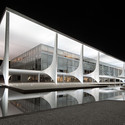
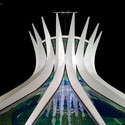


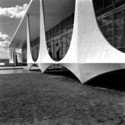


 44
44
Chandigarh
If no city can compete with the modernist credentials of Brasilia, he Chandigarh is. Masterplanned by Le Corbusier, the state of Punjab required a new capital, after the previous capital of Lahore became part of Pakistan in 1947. The share of horrific events of partition became part of the state capital of rationale as Le Corbusier used his carving open hand to Chandigarh position as a symbol of peace and reconciliation everyone hoped would follow the conditions of its foundation.
Chandigarh is one of the richest cities in India, with a quality of life that is second to none in the country. The framing of the city against the mountains, parks and the development of the hierarchical route of the city are very different from each foreground Contemporary City and Radiant City of Le Corbusier, but uses very skillfully natural geography site to inform and raise the scale of this modern city in a way that humanizes.





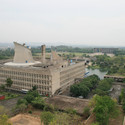
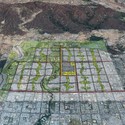
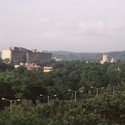 44
44
Islamabad
also founded as part of the legacy of the 1947 partition, the Pakistani capital of Islamabad was built from ' a desire to balance development throughout the country and the government move further away from the coast easily attacked. The planned town was built on the idea that urban areas should be constructed scientifically and should be replicated as models to develop as necessary - model capital for a state that itself "developing country model." even considered this conception of growth was met with a lot of it, and the capital now houses 2.2 million in the metropolitan area.
triangular grid system Constantinos Doxiadis was arranged in sectors, which has not always been achieved successfully : the idea of model designed flexible districts built for growth has not quite engaged with the strictly hierarchical regulated sectors, distinguishing different classes - government employees have their own accommodation away from the rest of the city was allocated to the
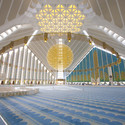
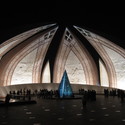
.jpg?1427707846)
 44
44
Naypyidaw
The capital of Myanmar was moved from Yangon to the center of the country there are only 10, in 05 - the creation, according to UN, one of the most dynamic cities in the world with an official population of nearly one million. Despite being one of the poorest countries in Southeast Asia, Myanmar's capital is a well maintained, landscaped conurbation covering a staggering 2,700 square miles, with up to 20 channels of roads. Although fiscal rumored $ 4 billion pales in comparison to Cairo to $ 45 billion, the city has a monumental parliament complex of 31 buildings and Uppatasanti Pagoda, a hollow replica of the famous Shwedagon Pagoda in Yangon.
The Myanmar government claimed to create the new capital in response to the overcrowding of the former capital more quickly and inability to expand government offices still often housed in dilapidated buildings from the colonial era. Naypyidaw is also located near the exact center of the country, making it a transportation hub; but this has not prevented some to speculate that the capital was moved for security reasons, given the reluctance to open up parts of the city of journalists.

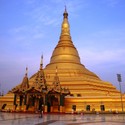
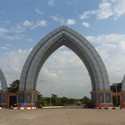
 44
44
Astana
Founded as a Russian colony in 1830, the Kazakh capital was moved here in 1997 and demanded constructed organs of government, transforming the face and the economy of this city by adding a new administrative area of nearly 80 square miles and a population of about 340,000 people. The new capital was fitted with the intention of creating a global city: Norman Foster a shopping center in the form of a tent big money, commercial mirror of another project Astana Foster, 77m high glass Pyramid of Peace and of the Agreement, as well as a concert hall by the Italian architect Manfredi Nicoletti and of course the development plan itself, by Japanese architect Kisho Kurokawa.
Kurokawa was chosen to create a cutting edge, international city (earlier attempts to find native Soviet trained architect was considered like looking back too), which could break with the Soviet past and to attract the world's attention in a way that the previous capital Almaty never could. After philosophical perspective radically postmodern Kurokawa, the capital has become known for the futuristic buildings and Kurokawa attempts to create an environment that reflects Kazakh life and independence.
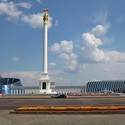

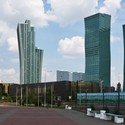
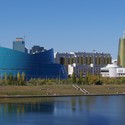 44
44
Posting Komentar